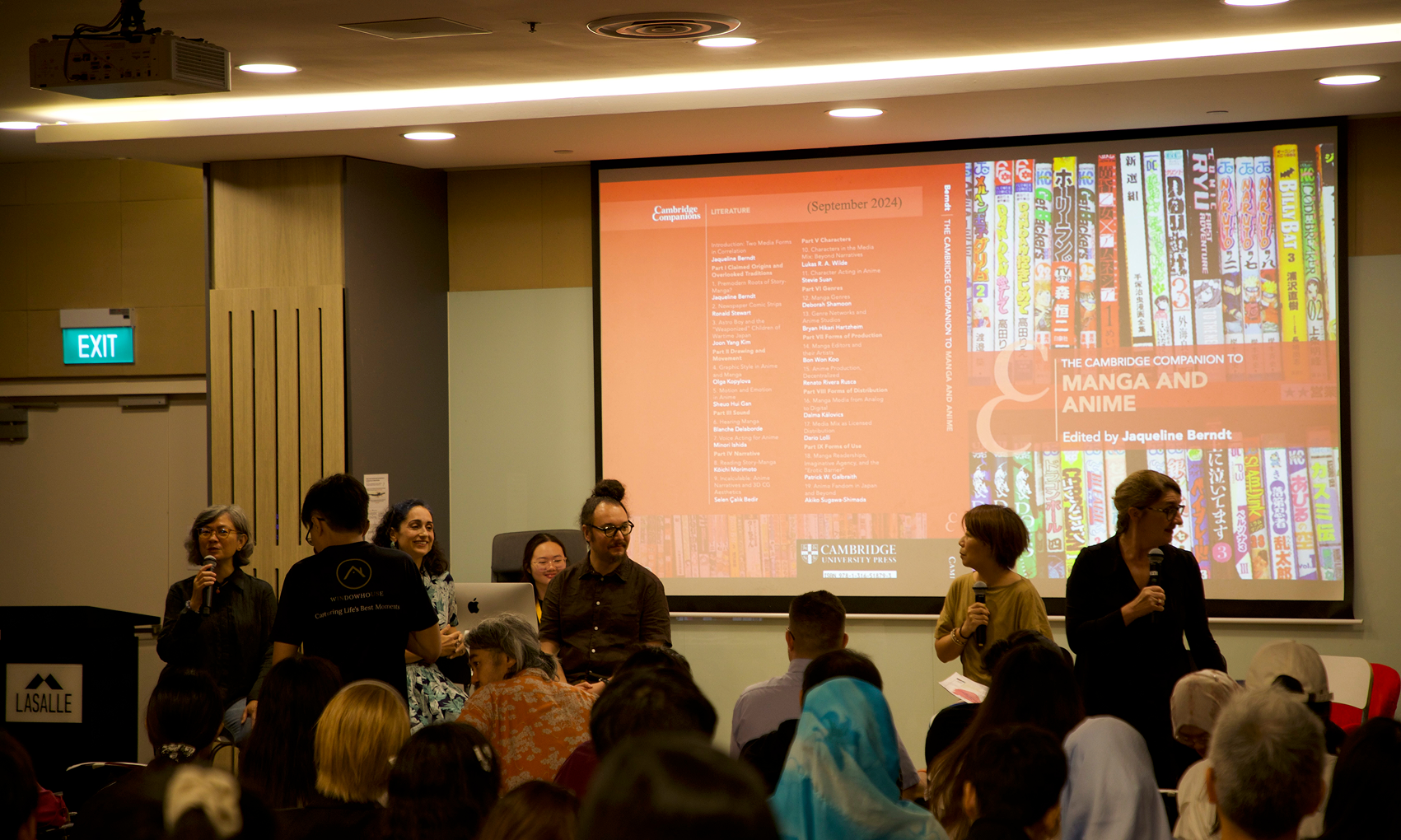Journal and book publications
Towards ‘meaningful’ KPIs? Capturing multidimensional impacts in the arts
This paper addresses the current challenges of using KPIs to measure the impacts of the arts, against a framework of what it means to do ‘performance measurement’ for arts organisations. It considers why current key performance indicators are perceived as problematic, discusses the distinctions between intrinsic and instrumental benefits of the arts as well as existing literature on these, and argues that there is a need for more research in order to develop complex indicators in Singapore that can be used by arts organisations and the National Arts Council alike to capture the more intangible effects of the arts.
Citation:
Wong, Audrey. “Towards ‘Meaningful’ KPIs? Capturing Multidimensional Impacts in the Arts.” The Art of Measuring the Arts, Institute of Policy Studies, 2018, pp. 18–26.
Uncanny Arts and the Aesthetics of Cybernetic-Existentialism
Uncanny' works by a number of contemporary artists are analysed in relation to the themes and insights of both cybernetics and existentialist philosophy. This reveals that central ideas from these largely neglected fields remain current and potent within innovative art practices. Artists employ cybernetic systems to provoke aesthetic sensations of the uncanny, while simultaneously encapsulating existentialist concerns. Pierre Huyghe's mysterious installation responds to the life-breath of visitors to mutate human cancer cells. Susan Collins and Rafael Lozano-Hemmer construct cybernetic worlds-within-worlds to render us beings-for-others during intimate encounters with strangers. Urich Lau and TC&A involve and implicate the audience in eerie expressions of what existentialists term being-towards-death. These artworks prompt feelings of separation, alienation and existential angst; and emphasize human estrangement within a mysterious, incomprehensible or absurd world. But a cybernetic-existentialist reading also reveals that their evocation of human disquiet and isolation is tempered by an equal emphasis on positive notions of feedback loops, 'separation with communion', existential freedom and authentic interactions with the world and with Others. The artworks articulate cybernetics' and existentialism's shared interest in collapsing boundaries and erasing distinctions: between agents within a system; between the self and the Other; and between perceiving, feeling and acting.
Citation:
Dixon, Steve. “Uncanny Arts and the Aesthetics of Cybernetic-Existentialism”. Technoetic Arts: A Journal of Speculative Research, vol. 16, no. 2, 2018, pp. 191-214.
Audience As The New Creative: A Study of the Co-creation Role Audience Play in a Participatory Environment to Create Effective Advertising Campaigns with the Creative in the Context of Singapore
As digital technology has profoundly changed the way people communicate and interact with each other, there is a need to also change the way in which advertising communicates with its audience. Thus, a good advertising campaign should be one that lever ages on digital communication and cocreation to enable active engagement, participation and reaction from the Audience. It is about creating a participatory environment for the target audience to cocreate successful advertising with the Creative in order to increase its effectiveness. Besides examining past successful Consumer Generated Advertising (CGA) campaigns to study the interaction and engagement of the Audience which had made them effective and led to their success, a series of interviews with key creative professionals in Singapore were conducted to provide insights into the cocreator role the Audience play in a participatory environment to create successful participatory advertising campaigns with the Creative in the context of Singapore. All in all, the findings gathered affirmed that the shift in the way people communicate due to the digital revolution has called for a collective effort between the Creative and the Audience to produce effective advertising campaigns that can break through ad clutter. This study would benefit agencies, brand owners, brand strategists, marketers and communications professionals by offering them a better understanding of the shift in the changing advertising practices today, and in return create a more vibrant and creative advertising industry.
Citation:
Sim, Kathryn Shannon. “Audience As The New Creative: A Study of the Co-creation Role Audience Play in a Participatory Environment to Create Effective Advertising Campaigns with the Creative in the Context of Singapore.” Cumulus Conference Proceedings Paris 2018, no. 03/18, 2018, pp. 1178-1197.
Engaging Creative Media Students’ Motivation: The Influence of Autonomy, Peer Relationships, and Opportunities in the Industry
Motivating students in creative media courses can be a challenge due to the demand for creativity which is hard to be taught. Hence, motivation needs to be re-identified and re-addressed for the creative disciplines. Conventionally, creative media courses adopt the studio-based learning, and with this unique dynamic teaching approach, students are required to have face-to-face tutorial sessions with their tutors on a regular basis, as well as participate in group projects and produce creative artefacts of industry standard quality. In this paper, we investigate the critical motivators for creative media students and identify those factors throughout the study. The study aims to examine how crucial and influential the autonomy, peer relationship and the future career opportunities for students’ motivation. Research includes a survey with questions based on a conceptual framework adopted from self-determination theory. The results suggest that autonomy, peer relationships and the opportunity for future careers are the primary motivators for students in the programme. The implications of the findings are discussed, and recommendations are provided to faculty members in the creative programmes.
Citation:
Shaw, Christopher, and Jae-Eun Oh. ''Engaging Creative Media Students' Motivation: The Influence of Autonomy, Peer Relationships, and Opportunities in the Industry.'' World Journal of Education, vol. 8, no. 6, 2018, pp. 1-10, doi: https://doi.org/10.5430/wje.v8n6p1.








